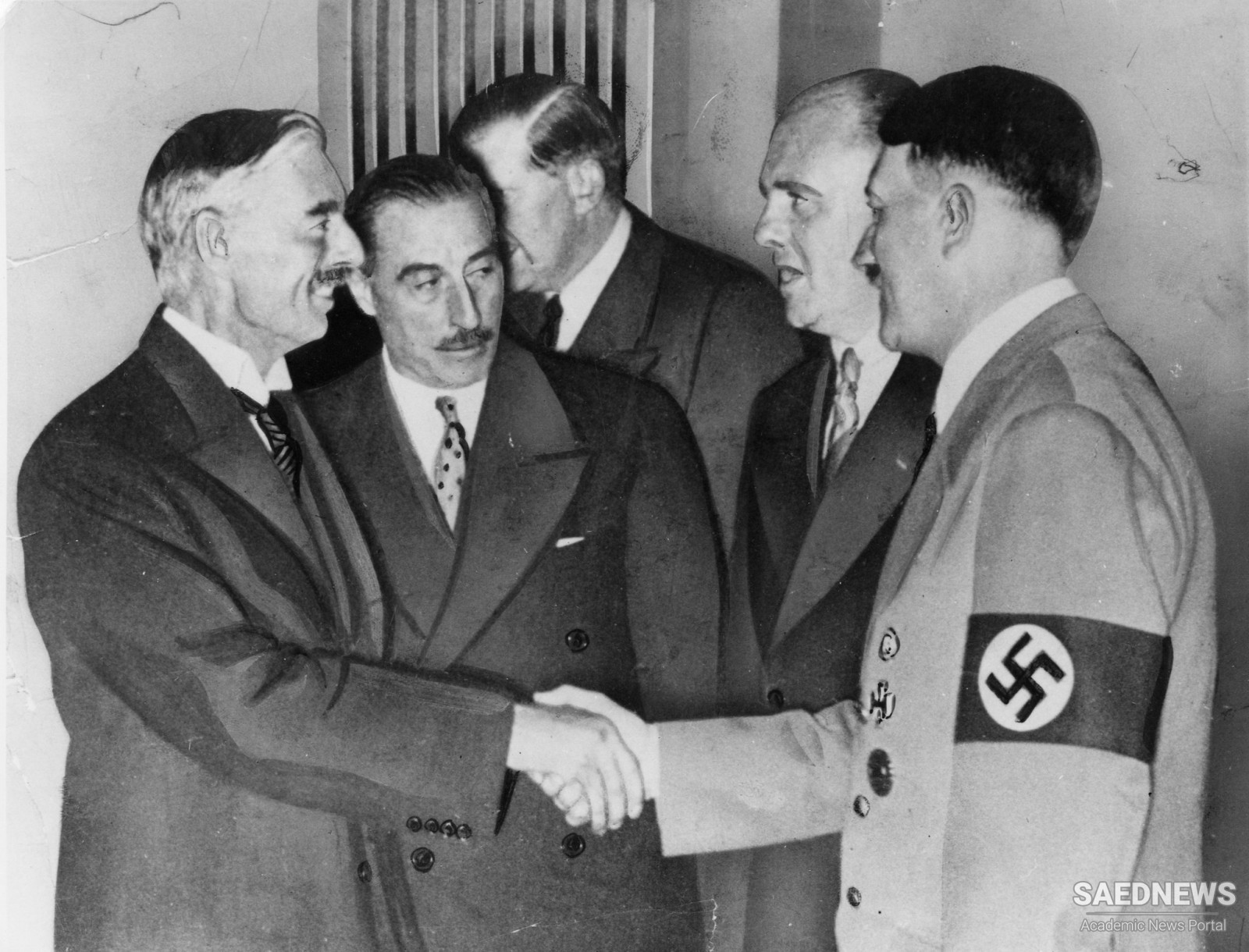According to conventional interpretations pacifism led to appeasement and isolationism, which left Britain and other countries vulnerable to fascist aggression. Walter Lippmann wrote, “The preachment and the practice of pacifists in Britain and America . . . were the cause of the failure to keep pace with the growth of German and Japanese armaments. They led to the policy of so-called appeasement.” Reinhold Niebuhr held similar views. “Nazi tyranny was allowed to grow . . . because so many citizens of a Christian civilization were prevented by these (pacifist) scruples from resisting the monster when there was yet time.”
Neville Chamberlain was forced to yield to Hitler’s demands, according to this view, because of the pervasiveness and influence of pacifist pressure. Variations on this theme have permeated debates about war and peace ever since. In August 2006 US Defense Secretary Donald Rumsfeld evoked the memory of appeasement to challenge critics of Bush administration policy in Iraq. The world today faces “similar challenges in . . . the rising threat of a new type of fascism,” Rumsfeld claimed, warning that “some seem not to have learned history’s lessons.”
The claim that pacifists were responsible for the political vacillations and mistakes that led to World War II is profoundly mistaken. Cecelia Lynch demonstrated in her masterful account Beyond Appeasement that the majority of those associated with interwar peace campaigns were opposed to appeasement and favored a forceful response to fascist aggression. As Martin Ceadel wrote, the isolationists, defeatists, and appeasers of the interwar era were not members of the peace movement but “fellow travelers” of that movement.4 British, French, and US officials sometimes pandered to the widespread peace sentiment of the time, but they refused to adopt peace movement proposals that might have prevented war.
As militarism advanced in Manchuria, Abyssinia (hereafter referred to as Ethiopia), Spain, and Czechoslovakia, peace groups criticized the inaction of Western governments and demanded a more forceful response. Internationalists in Britain, led by the LNU, were particularly active in opposing appeasement. Peace advocates in Britain, France, the United States, and other countries embraced an internationalist outlook and urged their governments to utilize the collective security machinery of the League of Nations. Many supported the use of coercive sanctions, including military measures, to counter the growing fascist threat.
To be sure some pacifists tried desperately to retain their purity. They rejected the use of military force under any circumstance. A few remained absolute pacifists even after Nazi armies attacked Poland and the Low Countries. In 1940 a handful of US peace advocates went so far as to ally with right-wing nationalists in the America First Committee. Isolationism, which emerged among nationalist Republicans, found converts on the left among those who could not accept the prospect of another world war. By the late 1930s, however, most of those who had previously embraced pacifism found themselves supporting the use of force against the rising Nazi menace. The advocates of absolute pacifism dwindled to a minuscule presence within society and were a minority even within the peace community. As Lynch wrote,
Most pacifists, despite their determination not to be involved in war preparations, opposed the appeasement of Italy . . . condemned Hitler’s racist domestic policies, condemned German and Italian assistance to General Franco’s forces in Spain, and expressed unease about Germany’s foreign policy intentions. Most peace advocates were opposed to inaction and defeatism and were willing to support forceful action to protect nations threatened by war.


 Peace Inside and Outside: How Islamic Nonviolence Policy Works in Practice?
Peace Inside and Outside: How Islamic Nonviolence Policy Works in Practice?














































